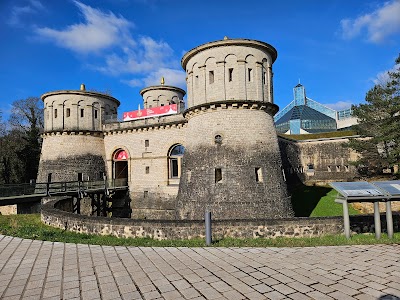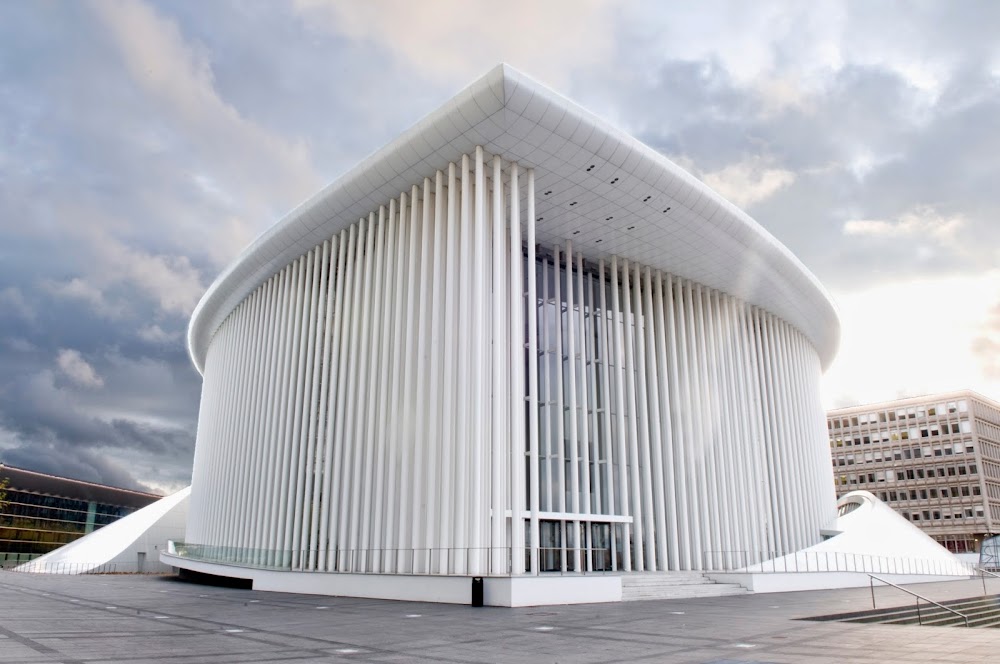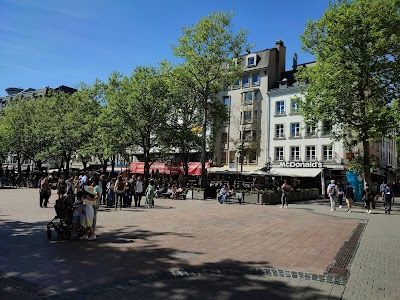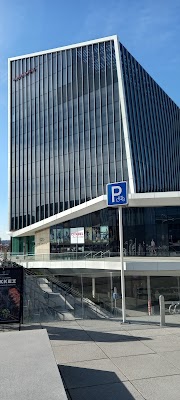Fort Thüngen (Fort Thüngen)
Overview
Fort Thüngen: A Historical Gem
Fort Thüngen, affectionately known as "Three Acorns" by locals due to its three distinctive acorn-shaped towers, is a historical treasure located in the Luxembourg District of Luxembourg City. This impressive fortress is a must-visit for history enthusiasts, architecture aficionados, and anyone eager to explore the rich past of this captivating city.
The Origins and Significance
Constructed in the late 1730s under Austrian rule, Fort Thüngen was designed by the renowned military engineer Vauban. It was an integral part of Luxembourg's extensive fortifications, which earned the city the nickname "Gibraltar of the North." Named after Baron Adam Sigmund von Thüngen, the Austrian officer who oversaw its construction, the fort has undergone various expansions and modifications over the centuries, mirroring the turbulent history of European warfare and advancements in military technology.
A Strategic Stronghold
Perched on the Kirchberg plateau, Fort Thüngen boasts an elevated position that offers sweeping views of the surrounding landscape and the Alzette River below. This strategic vantage point allowed it to serve as a formidable defense mechanism for Luxembourg City. The fort's intricate architecture, featuring thick walls, deep moats, and angular bastions, made it nearly impenetrable, showcasing the military engineering expertise of its era.
A Serene Surrounding
In addition to its military significance, Fort Thüngen is renowned today for its tranquil and picturesque surroundings. The area has been transformed into Dräi Eechelen Park, a lush green space perfect for leisurely strolls or relaxation. This combination of historical architecture and natural beauty creates a unique ambiance, making it an ideal spot for a day out with family and friends.
Transformation Over Time
One of the most intriguing aspects of Fort Thüngen is its evolution through the ages. In the 19th century, the fort's military importance waned, resulting in partial demolition during the mid-1800s. However, significant restoration efforts in the late 20th and early 21st centuries have preserved its historical significance and allowed it to thrive as a cultural landmark today.
Discovering the Musée Dräi Eechelen
Today, Fort Thüngen houses the Musée Dräi Eechelen, where visitors can dive into the fort's rich history through a diverse array of exhibits and artifacts. The museum takes you on a chronological journey from the fort’s construction to its involvement in various historical contexts, including the many sieges and occupations Luxembourg has faced. With interactive displays and guided tours, it offers an engaging and educational experience for visitors of all ages.
Exploring the Kirchberg District
A visit to Fort Thüngen also provides an opportunity to appreciate the surrounding Kirchberg district, known for its modern architecture and European institutions, including the Court of Justice of the European Union. The contrast between the historic fort and the contemporary skyline of Kirchberg highlights Luxembourg's unique blend of old and new.
Panoramic Views and Iconic Towers
For those who enjoy breathtaking views, the fort's towers offer stunning panoramas of Luxembourg City. On clear days, you can see the picturesque Grund quarter, the impressive Adolphe Bridge, and the vibrant cityscape beyond. Photography enthusiasts will find countless vantage points to capture the essence of Luxembourg’s scenic beauty.
Another fascinating feature of Fort Thüngen is its iconic acorn-shaped towers, which serve as symbols of the fortress and the city itself. These acorns were not merely decorative; they housed lookout posts and artillery positions designed to defend against potential intruders.
Convenient Access and Local Cuisine
Accessing Fort Thüngen is straightforward for tourists, with well-marked pathways from the city center and plenty of public transportation options available. After immersing yourself in history, take time to relax at nearby cafes and savor local Luxembourgish cuisine, rounding out your experience beautifully.
Conclusion
In summary, Fort Thüngen is more than just a relic of the past; it’s a vibrant historical site that connects Luxembourg's storied history with its dynamic present. Its strategic importance, architectural brilliance, and the blend of historical and modern elements make it a captivating destination for travelers. Whether you’re a history lover or simply seeking a beautiful and serene spot to explore, Fort Thüngen promises an unforgettable experience.






